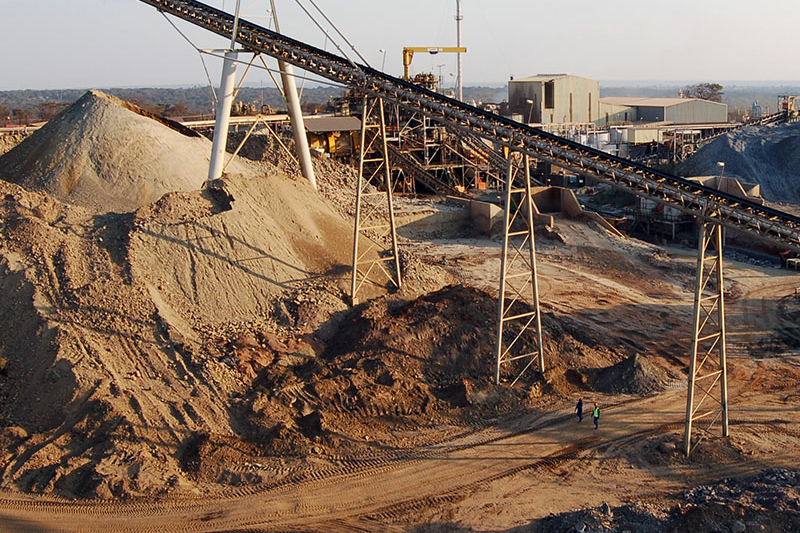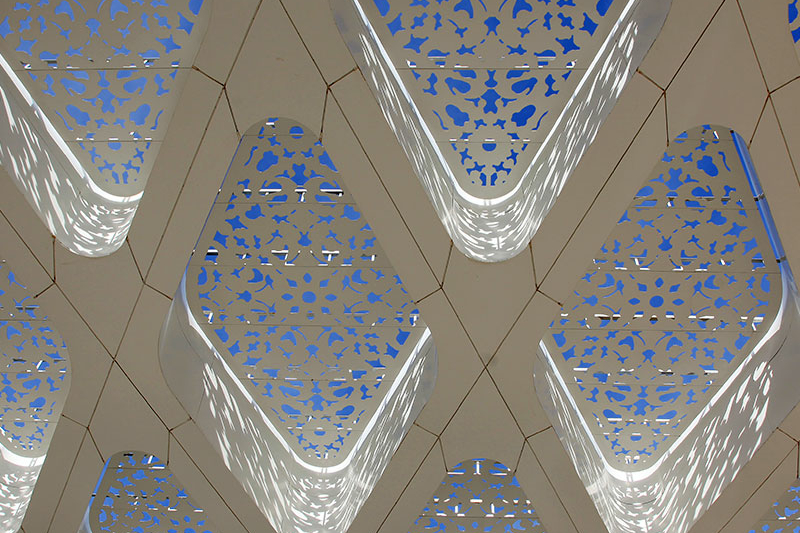Climate change litigation in Africa: Current status and future developments
Climate change litigation is increasing steadily worldwide, although few cases have been filed yet in Africa.

By Mukund Dhar, Africa Interest Group Leader
Our seventh edition of Africa Focus focuses on the potential for transformative changes within Africa during a time of historic global transition—not just from a COVID-19 to post-COVID-19 world, but against the backdrop of the United Nations Climate Change Conference COP26 in Glasgow, Scotland.
Issues around balancing greenhouse gas emissions against the development and use of natural resources as Africa industrializes and seeks to overcome roadblocks and challenges to growth and climate change-related challenges and vulnerabilities against GDP growth and increasing prosperity will be seen increasingly across sectors, industries and geographies in Africa. These discussions are already defining the way in which governments, investors, lenders, communities and other stakeholders view opportunities and investments in Africa and will do so more directly and more frequently in the coming years.
What does this mean for the world of business? Litigation related to climate change, a now well-established trend in Europe and North America, seems to have reached Africa, too. In "Climate change litigation in Africa: Current status and future developments," we outline signature cases and examine climate-related matters that might trigger challenges and disputes across Africa.
Equally, we all recognize that there are increasing investment opportunities when it comes to renewable energy. Seven of the ten sunniest countries in the world are in Africa, and wind power is no longer a novel feature in the increasingly sophisticated energy landscape in Africa. In "Renewable energy in Africa: Update in the era of climate change," we explore the significant opportunities for wind, geothermal and hydropower, too.
US foreign policy toward Africa has undergone significant shifts under the Biden administration. In "US government agencies focus on Africa," on the continent and their focus and how that ties in with both energy transition and renewable energy. In "Debt: Outlook for Africa brightens after challenging first half to the year," we discuss recent successful loan and bond issuances by African borrowers, investor resilience and lender interest in high-quality credits throughout the region.
Africa is experiencing a boom in M&A. In "M&A transaction terms: Comparing Africa to Europe," we contrast terms that typically apply to African M&A transactions, with those in Europe. And "African M&A stages a comeback" explores how African transactions appear to be highlighting a renewed sense of confidence among dealmakers. Acquisition and divestment strategies in Africa have become highly sophisticated. As a case study, "Acquisition financing in an era of energy transition" describes the January 2021 sale of a 45 percent stake in Nigerian Oil Mining Lease 17 (OML 17) and related infrastructure assets, using an innovative, first-of-its-kind hybrid financing structure.
Finally, "Southern Africa's PGMs are on the rise" explains how platinum group metals (PGMs) are increasing in southern Africa mining, on the back of demand for net-zero and the green economy.
Climate change litigation is increasing steadily worldwide, although few cases have been filed yet in Africa.

Africa offers vast potential for renewable energy deployment and investments.

Significant differences exist between terms that typically apply in M&A transactions in Africa and Europe.

H1 2021 dealmaking within the continent appears to be turning a corner.

Africa is a priority for several Biden administration agencies working in development finance.

Lender caution following Zambia's debt repayment default in 2020 has weighed on African debt issuance, but successful raisings by high profile borrowers show that investor appetite remains resilient.

An innovative, first-of-its-kind hybrid acquisition financing in Nigeria.

PGMs are helping Southern African mining remain relevant and contributing to a global clean and green transition.


PGMs are helping Southern African mining remain relevant and contributing to a global clean and green transition
Subscribe to receive Africa Focus
Among the rarest metals on earth, PGMs are well known for their catalytic properties.
Platinum group metals (PGMs) have been the main contributor to a major uplift in Southern African mining production in 2021—the biggest bounce in six years after disruption caused by the pandemic and a significant production decrease in 2020.
The recovery coincides with the transition by automotive manufacturers from combustion engines to electric vehicles. It may have been expected that this would risk the loss of a powerful driver of demand for the Southern African PGM. But in a reversal of fortunes, PGMs are helping to ensure that the region remains relevant and is contributing to the global clean and green transition.
Along with a price boom, there seems to be a new wave of investment interest in PGMs, but this relies, to a large extent, on demand-side stability.
Among the rarest metals on earth, PGMs, which include platinum, palladium, rhodium, ruthenium, iridium and osmium, are well known for their catalytic properties. This makes them resistant to corrosion, wear and tarnish, and gives them excellent high-temperature characteristics, high mechanical strength, good ductility and stable electrical properties.
A significant driving force behind the PGM boom is the automotive sector. With 78 million cars being produced in 2020, the need for autocatalysts and the PGMs used to make them is significant. The more stringent emissions regulations that have been put in place in Europe, China and India—driving the increase in the use of autocatalysts in vehicles—have started to impact the subsequent demand for PGMs.
Ultimately, the expected growth in battery electric vehicles (EVs), which do not use autocatalysts, may result in some reduction in demand for PGMs. However, this transition will take time and, during the transition phase, combustion engine vehicle emissions are expected to become even more heavily regulated by governments worldwide.
Approximately three million EVs were sold in 2020, representing less than 5 percent of global sales. EVs are expected to account for at least 7 percent of the global road vehicle fleet in 2030, showing continuing strong demand in more traditional modes of transport.
While current demand hinges on autocatalysts, PGMs are making rapid progress in the new end-use sectors of the hydrogen economy: fuel cells; lithium batteries; low-loss computing; and food technology.
Their particular combination of chemical and physical properties makes PGMs valuable to the end-market for a range of industrial, medical and electronic applications—not just for investment but for real, functional use. In many of their applications, substitutes for PGMs are either not feasible or are considered to be inferior in performance. As such, demand for PGMs is expected to continue even as prices rise.
Fuel cell technologies are also becoming increasingly prominent across many sectors, including transport, as part of the global push to improve air quality and reduce global warming. Additionally, the anticipated growth in demand for electrolysis capacity to produce green hydrogen presents significant demand potential in the longer term. Together with the use of platinum in automotive fuel cells, PGMs will play a key role in the hydrogen economy and therefore contribute to the energy transition process.
With environmental stewardship identified as one of the main sources of sustained demand, PGMs will form a significant part of the conversation as green energy metals of the future at the UN Climate Change Conference in November, alongside lithium, cobalt and copper.
Despite this increased demand, there are considerable factors that are limiting PGM supply. While new projects have been announced and will hopefully come online, the process is slow and the funding environment risk-averse, even amid soaring commodity prices. According to the World Platinum Investment Council, 2021 will be the third consecutive year with a deficit in supply. Supply is projected to be broadly flat for the next three to four years, resulting in continued expectations around buoyant pricing.
In addition, Johnson Matthey's latest PGMs Market Report notes that the palladium and rhodium markets will remain in deficit, despite all-time-high prices being recorded, with palladium climbing above US$3,000 per ounce and rhodium repeatedly surging to US$30,000 earlier this year.
According to the report, mining alone will not produce enough supply of PGMs to meet demand—approximately 25 percent of supply is from recycled materials—which may in turn drive prices even higher.
This sector is well positioned to capture future investment, especially as global economies recover.
This growth has significant implications for the Southern Africa mining sector, which accounts for more than 60 percent of world PGM production. Russia produces a further 26 percent, and most of the rest comes from Canada and the US.
In particular, South Africa produces more than 80 percent of the world's platinum, more than 30 percent of the world's palladium (Russia accounts for about 45 percent) and approximately 80 percent of the world's rhodium.
For the first time since 2010, PGMs overtook coal as the most significant contributor to mining-industry revenue in South Africa, reaching ZAR 190 billion last year. Their performance continues to surge in 2021.
Mineral sales for March 2021 in South Africa reached a record ZAR 75 billion, with 41 percent of that generated by PGMs according to the latest data, while platinum supply for Zimbabwe in Q1 2021 showed 11 percent growth compared to the same period in 2020. Additionally, the Zimbabwe Statistics Agency reported that PGM exports for March 2021 increased by 202 percent to US$168.9 million—their highest export earning since 2009.
This uptick has translated into real opportunities for Southern African PGM miners, especially those that have been highly acquisitive during the last two years and focused on geographic diversification. While recycling from secondary markets is an attractive alternative, platinum producer Implats has suggested there will be a shift back to the South African production base, which will enable the PGM majors to capitalize on continuing strong demand.
Helping to drive this demand are new products such as PGM exchange-traded funds or novel investment products such as Norilsk's Global Palladium Fund, showing how investors are looking for different ways to obtain PGMs' physical and derivative exposure.
All of these conditions, together with the push toward a hydrogen economy, make for a positive and exciting outlook for a sector that might otherwise have struggled to find its place amid the expected rise of EVs. With automotive manufacturers and other end-users of PGMs being increasingly focused on the ESG performance of their entire supply chains, and debt and equity investors continuously raising the bar in the ESG realm, too, the sector is well positioned to capture future investment, especially as the global economic recovery gathers pace.
White & Case means the international legal practice comprising White & Case LLP, a New York State registered limited liability partnership, White & Case LLP, a limited liability partnership incorporated under English law and all other affiliated partnerships, companies and entities.
This article is prepared for the general information of interested persons. It is not, and does not attempt to be, comprehensive in nature. Due to the general nature of its content, it should not be regarded as legal advice.
© 2021 White & Case LLP